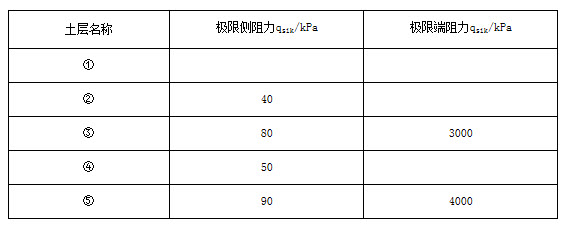问题
单项选择题
某桩基工程安全等级为二级,其桩型、平面布置、剖面和地层分布如图所示,土层物理力学指标见下表。已知复合基桩承台底地基土相应于任何复合基桩的总极限阻力标准值为472kN,各群桩效应系数分别为ηs=0.8,ηp=1.32,ηc=0.26,各抗力分项系数分别为γs=γp=γc=1.65,按《建筑桩基技术规范》(JGJ94-94)计算复合基桩的竖向承载力设计值,其计算结果最接近()。


土层物理力学指标

A.960kN
B.1050kN
C.1264kN
D.1420kN
答案
参考答案:C
解析:
R=ηsQsk/γs+ηpQPk/γp+ηcQck/γc
=0.8×(10×40+2×80)×π×0.6/1.65+1.32× ×3000/1.65+0.26×472/1.65
×3000/1.65+0.26×472/1.65
=511.5+678.2+74.4
=1264.1kN
